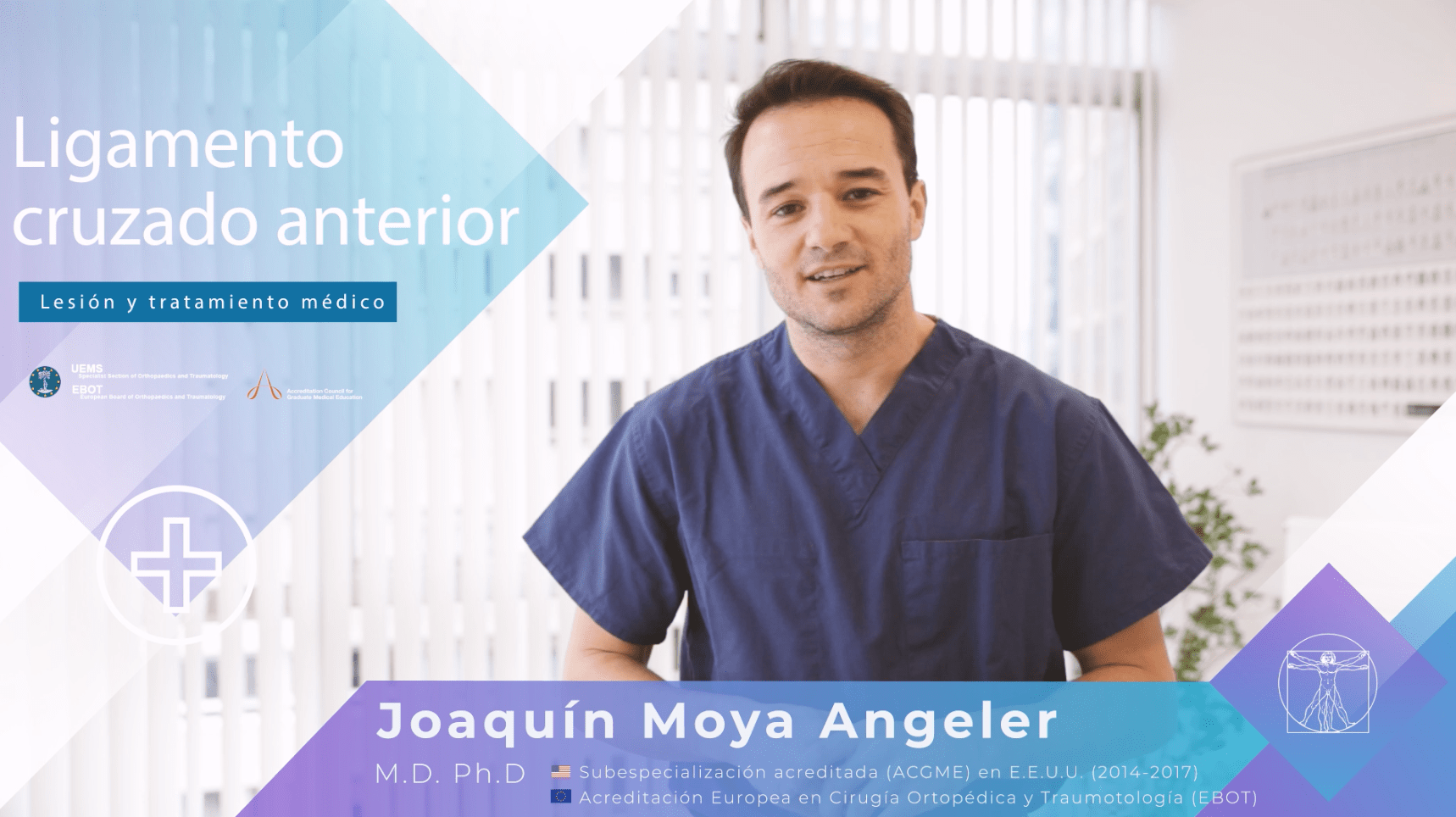
26 Feb Anterior cruciate ligament (ACL) of the knee: function, injury, diagnosis and treatment.
In this video we explain graphically the function of the anterior cruciate ligament (ACL) of the knee, as well as its most frequent mechanism of injury, the diagnostic methods and its treatment.
Hi, I’m Dr. Joaquín Moya Angeler, a specialist in sports medicine and orthopedic surgery and
today we are going to talk about the injury of the anterior cruciate ligament of the knee.
Well, so let’s talk about the anterior cruciate ligament of the knee, its injury and treatment.
To do so, first of all, it is important to understand how the knee joint works, which is formed by the union of two bones: the femur, with its two condyles that lie on two platforms or plateaus in the bone of the tibia.
Therefore, it is easy to understand that it is a joint inherently unstable unlike other joints such as the hip, where there is a ball contained in a socket or the ankle joint, where there is a mortise or malleolar clamp.
For that reason, the stability of the knee joint depends largely of a few powerful ligaments to hold these bones together. These ligaments are four: two on both sides of the knee, in the inner or medial part, the medial collateral ligament; on the outside, the lateral collateral ligament; and two powerful ligaments in the middle, which, constitute the so-called medial pivot of the knee and are the anterior cruciate ligament and the posterior cruciate ligament.
Therefore, when any of these ligaments is injured and teared the stability of the knee is severely compromised. But especially when the anterior cruciate ligament is injured, which avoids the excessive forward movement of the tibia over the femur.
Well, most of the anterior cruciate ligament injuries occur during sports activities and are typically caused by a well-defined mechanism of action.
With the leg on the ground, the femur and tibia rotate in opposit directions and strangle the ligament to the point sometimes of breaking it completely. When this happens, most patients report noticing a clicking sensation or an important POP in the knee and the knee gets severely swollen.
The definitive diagnosis of the anterior cruciate ligament injury it´s performed by the clinical exam where performing certain maneuvers we are able to perceive that abnormal movement between the femur and the tibia. And we confirm it through an imaging test which is magnetic resonance imaging (MRI).
Well, at this point it is important to understand than the anterior cruciate ligament of the knee has no healing potential on its own. Therefore, when it tears completely and causes symptoms of instability in active and young patients It is advisable to perform an intervention to reconstruct it.
This operation is performed assisted by arthroscopy.
Arthroscopy is a technique that allows us through small incisions to introduce a vision or optical system and various other instruments necessary to reconstruct the ligament. Generally, the intervention can be performed on an outpatient basis, you enter in the day and go home the same day. And anesthesia is usually from the waist down.
Well, that was all about the injury of the anterior cruciate ligament of the knee. In future editions we will explain the reconstruction surgery as well as other injuries associated with the knee.

